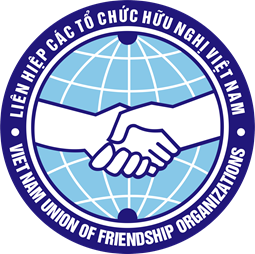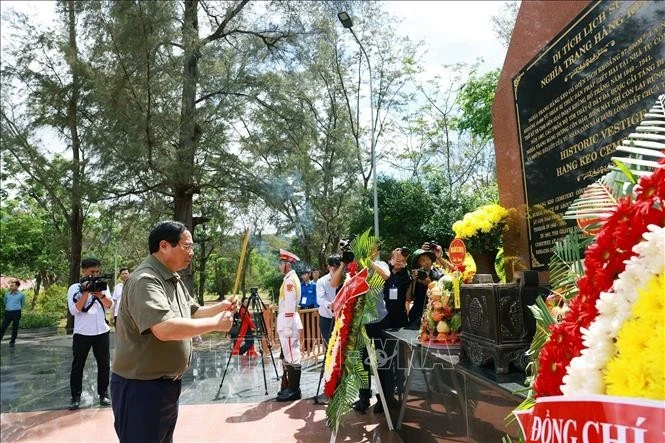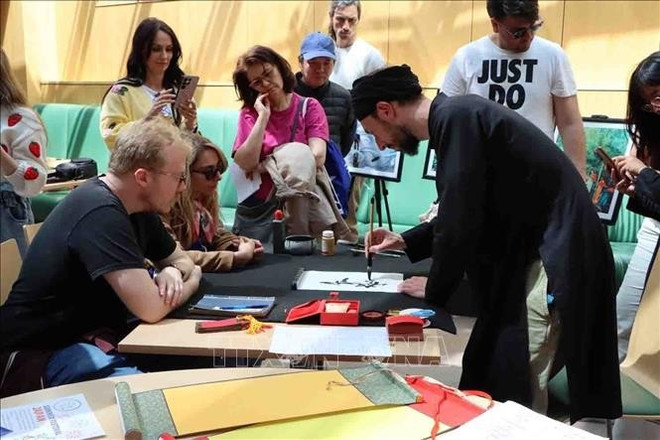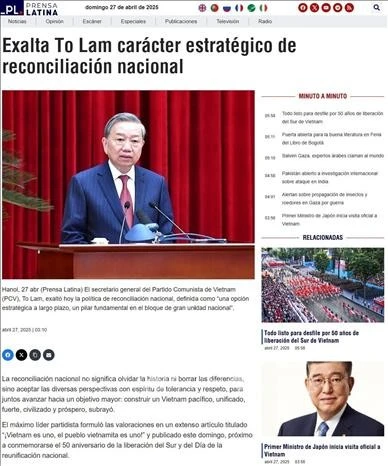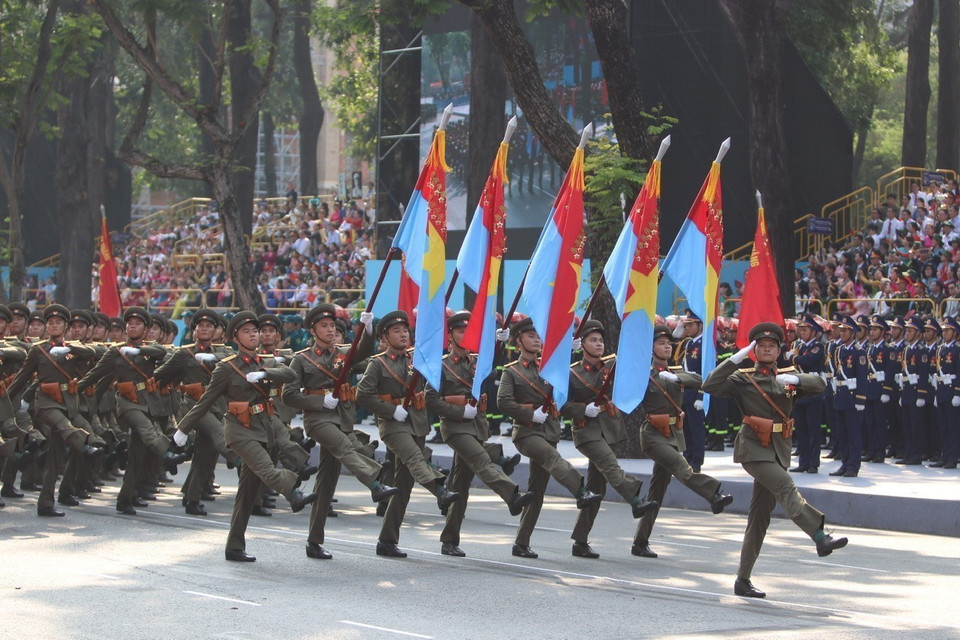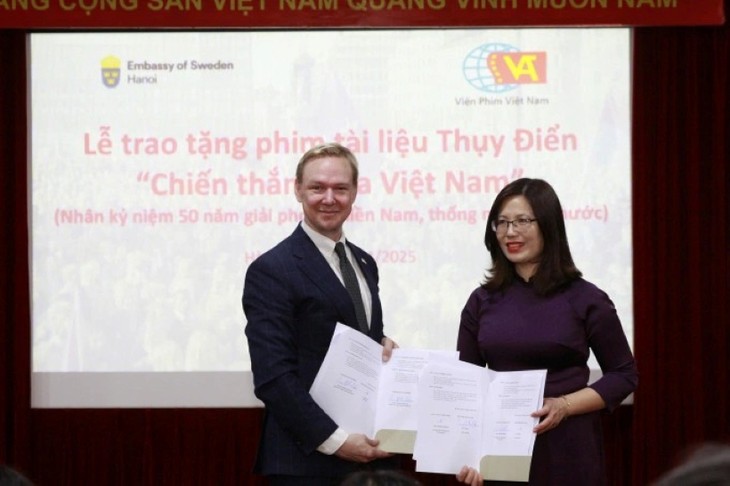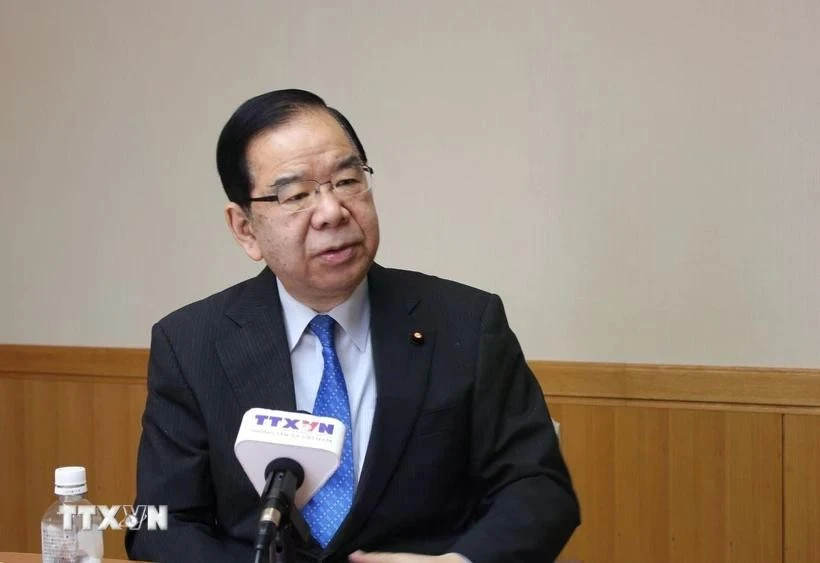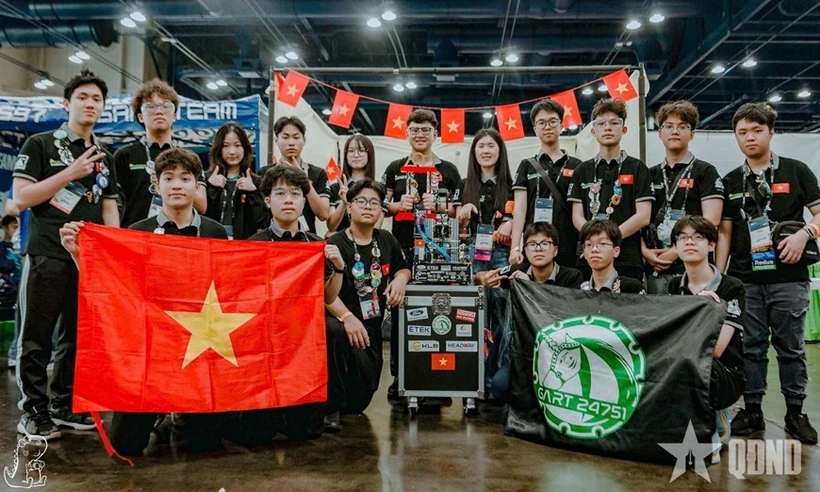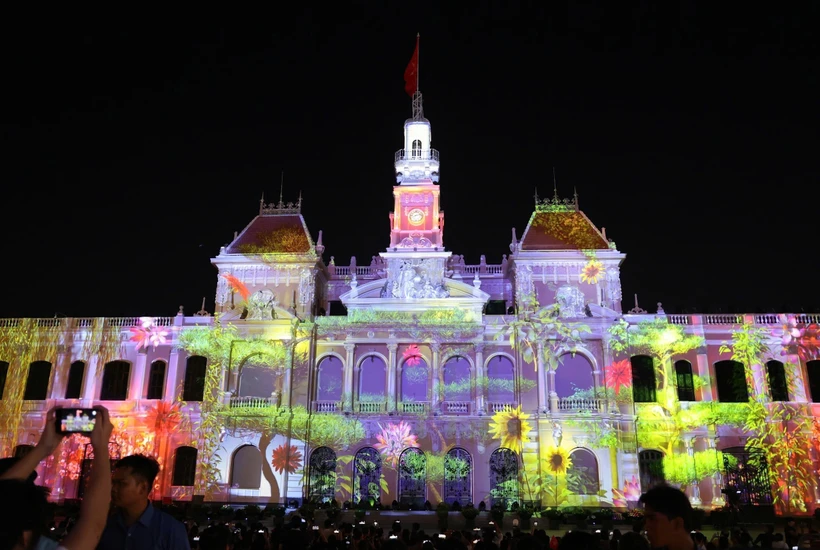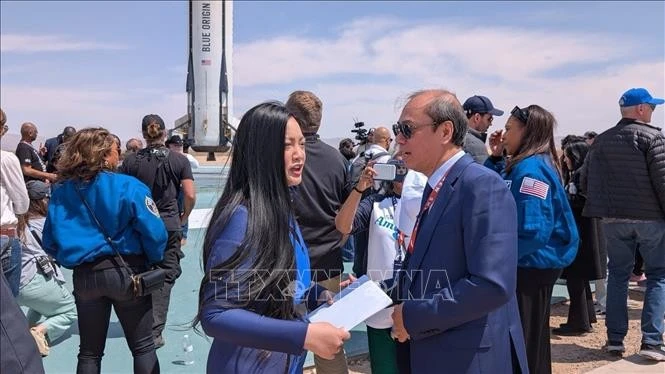
STRATEGIC THINKING, MILITARY BRILLIANCE: HOW CPV LED THE PATH TO VICTORY
In the spring of 1975, under the clear-sighted leadership of the Communist Party of Viet Nam(CPV), the Vietnamese army and people achieved a historic victory – completely liberating the South, reunifying the country, and ending more than two decades of war against the US imperialists.
The triumph wasn’t merely the result of patriotism, unwavering determination, and the indomitable fighting spirit of the Vietnamese people, it stood as an evidence of the CPV’s strategic precision and military artistry.
People’s war – the cornerstone strategy
From the beginning of the resistance against the US imperialists, the Party established the people’s war as its guiding principle, placing the people at the core and harnessing the collective strength of the entire nation in coordination with international support. The armed forces, including the regular army, local troops and guerrilla militia, served as the backbone of this strategy.

Young men and women of Saigon welcome self-defence fighters advancing to liberate the city on April 30, 1975. (Photo: VNA)
The Party’s concept of the people’s war was manifested through clear principles:
“All-people, comprehensive resistance war”, mobilising the strength of the entire nation, and strongly combining military action with political, economic, cultural, and diplomatic efforts.
Together with the armed forces courageously fighting on battlefields, people of all ages, regardless of gender, participated in protecting and sustaining revolutionary forces, handling transportation and logistics work, building political foundations, or organising uprisings in enemy-controlled territories. This created a widespread combatant network.

Prime Minister Pham Van Dong, advisor Le Duc Tho, and Deputy Prime Minister Nguyen Duy Trinh in discussion with US government advisor Henry Kissinger regarding the implementation of the Agreement on February 10, 1973. (Photo: VNA)
Particularly, the Party directed close coordination between military and political actions, along with a combination of direct battlefield confrontation, diplomatic efforts, and enemy proselytisation to create collective strength for defeating the enemy. The 1973 Paris Peace Accords exemplified this approach. At the negotiating table, Vietnamese representatives tenaciously maintained advantageous terms

The historic victory of “Hanoi – Dien Bien Phu in the air” dealt a decisive blow to the enemy’s invasion will, forcing the US to sign the Paris Peace Accords on January 27, 1973. (Photo: VNA)
On battlefields, the strategic offensive campaign in 1972 weakened enemy forces. When the US escalated with the B-52 bombing campaign over Hanoi and Hai Phong, the Vietnamese army and people fought resolutely, achieving the historic “Hanoi – Dien Bien Phu in the air” victory. This decisive blow to the enemy’s invasion resolve forced the US to sign the Paris Peace Accords on January 27, 1973, laying groundwork for the 1975 Spring General Offensive and Uprising that ultimately liberated the South and reunified the country.
“The small defeating the large, the weak overcoming the strong”, leveraging flexible and creative fighting methods that utilised terrain and natural features to inflict losses on the enemy.

The people’s war strategy – the invincible strength of the revolution. In the photo: Training for guerrillas from communes in Asun district, Gia Lai province. (Photo: VNA)
Confronting a military superpower with superior weapons, equipment, and economic resources like the US imperialists, the Party capitalised on guerrilla warfare with flexibility and creativity. The guerrilla tactics were carried out widely, making use of the forests, rivers, and villages for surprise attacks that depleted enemy forces and demoralised the troops of the US and the puppet regime.

US soldiers guarding the US Embassy in Saigon flee during a surprise attack by the Saigon special force on January 30 night and early morning of January 31, 1968, or the first and second day of the Lunar New Year. (Photo: Liberation Press Agency)
Particularly, beyond rural areas, the guerrilla warfare flourished in urban centres, forming special forces that executed shocking operations like the attack on the US Embassy during the 1968 Tet holiday.
Continuous adjustments of strategies in response to changing realities
During the resistance against the US, the Party continuously adjusted strategies, aligning them with the realities, while making breakthrough decisions in a timely fashion. The Party’s astute leadership was manifested through each phase, with appropriate strategic steps that ultimately determined the final victory.

On December 2, 1960, more than 2,000 people from My Tho province rallied and demonstrated, demanding the US – Diem administration end military operations sweeping through villages, and calling for Ngo Dinh Diem’s resignation and the establishment of a progressive democratic government in South Viet Nam. (Photo: VNA)
During 1954–1960: After the Geneva Accords were signed, the South fell under the regime of henchman Ngo Dinh Diem. Facing the extreme ordeal, the Party advocated combining political struggle with armed resistance, gradually building forces, and preparing necessary conditions for future offensives. This phase essentially laid the foundation for a prolonged struggle.

The 1968 Tet General Offensive and Uprising by armed forces and civilians in the South directly forced the Lyndon B. Johnson administration to de-escalate the war and seek a political solution to withdraw from the war in Viet Nam. (Photo: VNA)
During 1961–1968: When the US escalated the war and sent its expeditionary forces to the South, the battlefield complexion changed dramatically. To counter this situation, the Party intensified guerrilla warfare to defeat the enemy’s “Special War” strategy and subsequent “Local War” approach. The peak of this phase was the 1968 Tet General Offensive and Uprising, a powerful strike against the US’s invasion resolve that changed the war’s course, forcing the imperialists’ de-escalation and gradual troop withdrawal.
During 1969–1973: Following battlefield victories, the Party continued promoting its diplomatic strength, with the 1973 Paris Peace Accords marking a crucial turning point with the US’s forced withdrawal, creating new conditions and capabilities for the revolution in the South to enter the decisive phase. With US troops gone, the Saigon regime weakened considerably, creating favourable conditions for Viet Nam to prepare the general offensive to liberate the South.

The General Offensive and Uprising in the spring of 1975, beginning with the Central Highlands Campaign (March 1975) and ending with the Ho Chi Minh Campaign (April 1975), completely liberated the South and reunified the country. In the photo: The infantry and tanks of the liberation army advance to free Da Nang. (Photo: VNA)
During 1973–1975: Grasping the realities on the ground, the Party assessed that the Saigon administration was increasingly weakened and gradually losing control. Initially, the liberation of the South was planned for two years (1975–1976), but when opportunity arose, the Party made timely adjustments, shortening the timeframe to one year and eventually to a single dry season. The flexibility in strategic direction demonstrated the Party’s decisive mettle at the pivotal moments.
Meticulous combat plan
To deliver on the liberation goal, the Politburo and the Central Military Commission developed a meticulous operational plan, demonstrating sharp assessment of the situation and strategic command expertise. The pinnacle of this military art was to outline and implement three major decisive campaigns that created an overwhelming combined strength and led to the collapse of the Saigon regime in a shorter timeframe than initially anticipated.

The Central Highlands Campaign (from March 4 to April 3, 1975), the opening strike in the 1975 Spring General Offensive and Uprising by the Vietnamese army and people, secured victory, creating a turning point that changed the course of the war. (Photo: VNA)
The Tay Nguyen (Central Highlands) Campaign (from March 4 to April 3, 1975): Aiming at creating a strategic breakthrough, Vietnamese forces proactively attacked Buon Ma Thuot, surprising the enemy and forcing them into a passive position. This resounding victory shook the enemy’s defence system across the battlefield, compelling puppet forces to chaotically flee the Central Highlands and creating favourable conditions for promoting the offensive momentum.

In the photo: Armed liberation forces enter the Ngo Mon (Noon) Gate in Hue on March 26, 1975 morning. The campaign to liberate Thua Thien-Hue officially began on March 21, 1975, and by March 26, 1975, the revolutionary flag flew over Ngo Mon Gate. Thua Thien-Hue was completely liberated. (Photo: VNA)
The Tri Thien – Hue Campaign (from March 5 to 26, 1975) and the Da Nang Campaign (from March 26 to 29, 1975): Seizing upon the enemy’s retreating mindset following their defeat in the Central Highlands, the Vietnamese forces quickly advanced on Hue, and then proceeded to Da Nang. Within a brief period, the entire central region was liberated, pushing the puppet forces into a severe crisis.

The Ho Chi Minh Campaign (from April 26 to 30, 1975): With enemy forces extremely weakened, the Party launched the final assault on Saigon. The Vietnamese side arranged five military wings advancing into the city in accordance with the penned plan. At noon of April 30, 1975, the liberation army’s tanks crashed through the gates of the Independence Palace, and President Duong Van Minh of the puppet administration surrendered unconditionally.
It could be stated that the Party’s strategic command during the resistance war against the US was shown in its ability to identify the right moment for the general offensive, and execute quick attacks to quickly secure victories to prevent the US’s intervention. The Party combined military offensives with public uprisings to create overwhelming power while appropriately arranging forces to attack the enemy’s strategic weaknesses. This masterful leadership brought the Vietnamese revolution to complete victory, fully liberating the South and reunifying the country.
The Great 1975 Spring Victory powerfully demonstrated the Party’s sharp-witted leadership in outlining military strategy and organising and directing revolutionary warfare. The Party’s sound strategic thinking, flexible application of combat forms, and ability to seize political and military opportunities created a complete victory, ushering the nation into an era of independence and unity.
Nowadays, the lessons on strategic thinking and military artistry remain valuable, continuing to be the lodestar for the cause of national construction and safeguarding./.

The flag of the National Liberation Front and the flag of the Republic of South Viet Nam flying over Tan Son Nhat airport on April 30, 1975 (Photo: VNA)
Source: VNA
